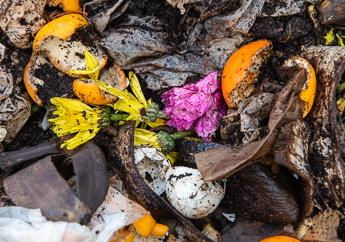
According to a study by the U.S. Environmental Protection Agency, roughly 30 to 40% of all available food in the United States goes uneaten each year, at a cost of over $161 billion every year. Food waste uses 21% of our fresh water supply to grow. It then takes up 21% of our landfill space when it is thrown away. According to EPA's Food Recovery Hierarchy, reducing the amount of food waste is the most preferred action you can take to prevent and divert wasted food.
Did you know "ugly" produce is a major source of food waste? Even though the produce may have blemishes, is imperfectly shaped or is too small or too big, it is just as rich in nutrients as the "ideal" produce. As a consumer, you can reduce food waste by buying the ugly produce. Other simple steps you can take to help reduce food waste can include the following:
- Plan your meals
- Think before you buy. Buy only what you need and will use
- Avoid the "Buy 2, Get 1 Free" syndrome
- Buy locally
- Be creative with leftovers
- Freeze, preserve or can extra fruits and vegetables
- At restaurants, take home the leftovers
- Take only what you can eat at buffets and events
Even the best meal planners and creative cooks end up with food scraps and some food waste. Before you toss that waste in the trash, consider composting it to fertilize new food plants. For more information about composting, visit Composting. By reducing food waste, we can save money, save energy and water resources associated with growing and transporting the food and reduce methane emissions from landfills.
For more information:
- 27 Solutions to Food Waste - ReFED
- A Systems Approach to Reducing Consumer Food Waste - NASEM
- Be a Food Waste Warrior - World Wildlife Federation
- Food Loss and Waste - USDA
- Food Waste - NRDC
- Furtherwithfood.org
- Reducing Food Waste - Save the Food - Ad Council
- Savethefood.com
- The Amazing Garbologist Adventure - StopWaste
